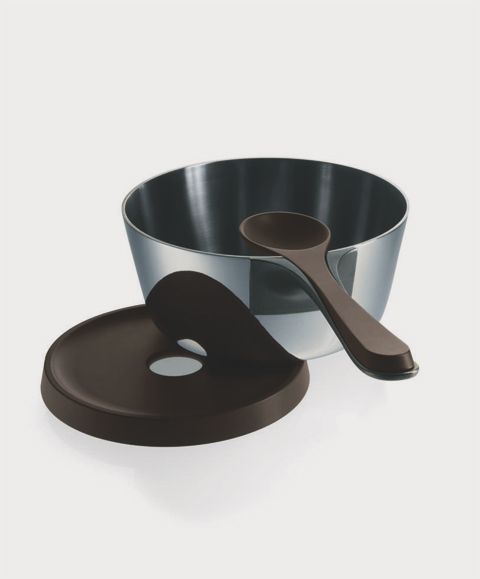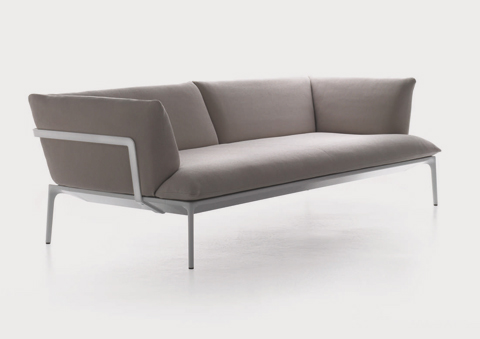A design prize significantly enhances the status of an article, its producer and of course the designer. And a prize is a matter of great honor specifically when what is involved is a Compasso d' Oro, the oldest and most important of all Italy's design awards. But what is decisive for good design? Fame or commercial success? "Ideally both at once," comments Florian Hufnagl, Director of Munich's Neue Sammlung. He believes that the jury's pronouncement delivers added quality from which everyone benefits. Because: "A competition sets the standards without which products will not survive in the market today."
It was precisely with this in mind that Gio Ponti and Aldo Borletti took the initiative back in 1954 and launched the Compasso d' Oro. With the prospering La Rinascente department store chain as the organizers, they had a strong commercial partner at their side from the word go. The joint objective: to promote the value and quality of Italian products nationally and internationally. And the timing was perfect. The Compasso's reputation grew with the diversity and strengths of Italian design in the 1960s. An increasing number of producers and creative minds took up the challenge. In 1959 the Associazione per il Disegno Industriale (ADI) got involved to put the competition between good and bad, meaningful and meaningless design on a professional footing. And in 1964 the ADI took over the Compasso's administration and organization, as has had that role ever since. Now, after almost 60 years, the golden compass amounts to a Who's who of Italian design: Franco Albini, Gae Aulenti and Achille Castiglioni, not to mention Mario Bellini, Alessandro Mendini and Ettore Sottsass have of course been among the winners. Anyone who wears that golden compass on their lapel has made it – at least in Italy.
So how does that work? How do you make it to Design Olympus? A look behind the scenes of the cherished award reveals more administration that reverence: a complex network of directors, delegations and committee members spread across all of Italy's provinces. At ADI there's a division of powers and a highly diversified staff structure destined to ensure that not even a small manufacturer from Apulia or Sardinia will slip through the net and thus not have the same chances as a global player from the North of winning a prize. The Compasso is awarded every three years. Anyone wishing to apply has to submit his or her entry to the Milan head office or to one of the 13 regional branch offices. Only those products are eligible as are already in production or will come to market over the next 12 months. Prototypes and small series items by new talents classify for the Young Design Award.
In the course of three rounds of voting, the ADI's permanent design commission (it consists of about 50 experts – critics, historians, specialist journalists, and designers) decides whether a product fulfills new aesthetic and/or substantive standards. If, according to the "Observatory", it's a good design, then the proposal first gets published in the yearbook of the ADI Design Index. Given an entry fee of about 150 euros as a non-ADI member and costs for the book publication of about 600 euros, compared to other design competitions the project is not expensive.
Meaning that anyone hoping for an award must be tenacious rather than rich. Lobbyists? No way. Because in order to protect the Compasso's integrity and independence the current eight-member jury is appointed anew for each prize session. Since 1970 ADI has insisted it be international in composition. Be they French, Swiss, Russian, American, Japanese: This smart move have ensured the Compasso retains its world reputation. And in this way as a participant you get feedback what products do best in what cultural world.
That said, is a national design competition still up to date in the age of globalization? Definitely. Italy is still one of the world's most important centers of design. And Milan with its constantly changing furniture fair and all the creative blood flowing through its veins is the Mecca where innovative design gets presented and enjoyed. Be it by Belgians, Taiwanese or Canadians – they'll be here.
When in the 1990s the importance of the Compasso seemed likely to pale in the wake of globalization, the submission criteria were expanded. However, instead of proclaiming an international competition, an agreement was reached acceptable to those championing Italy's national interests: Since then, products by non-Italians can also win, as long as the producer is Italian. The same applies to a foreign manufacturer if the design was made by an Italian. This cleared the way for international alliances, and only a little later Georg Sowden, Konstantin Grcic, Harri Koskinen and the Bouroullec brothers lifted the cherished trophy.
So what's the state of unique Italian design which Luisa Bocchietto as the current ADI President so lauds in her preface to the current 22nd Compasso d' Oro catalog? It remains a great role model for us all. And spurs us on to greater things. Thus, one of the latest new additions to Florian Hufnagl's Neue Sammlung collection is a thoroughbred Italian: the "Frida" chair made by Pedrali, designed by Odoardo Fioravanti. What did this design among countless others make it into the holy halls in Munich? "Quite simply because I think it is exemplary," states Hufnagl. If good design were always so simple...
To read on:
22 premio Compasso d'Oro
Edited by ADI
Softcover, 231 pages, italian / english
Corraini Edizioni, Mantova, 2011
38,99 Euro
www.corraini.com
 ”Myto” by Konstantin Grcic for Plank, photo © Plank
”Myto” by Konstantin Grcic for Plank, photo © Plank
 ”Frida” by Odoardo Fioravanti for Pedrali, photo © Pedrali
”Frida” by Odoardo Fioravanti for Pedrali, photo © Pedrali
 ”Fiat 500”, photo © Fiat
”Fiat 500”, photo © Fiat
 ”Teak“ by Alberto Meda for Alias, photo © Alias
”Teak“ by Alberto Meda for Alias, photo © Alias
 ”Pasta Pot" by Patrick Jouin for Alessi, photo © Alessi
”Pasta Pot" by Patrick Jouin for Alessi, photo © Alessi
 ”Steelwood“ by Ronan and Erwan Bouroullec for Magis, photo © Magis
”Steelwood“ by Ronan and Erwan Bouroullec for Magis, photo © Magis
 Winners of 2011: ”Hope” by Francisco Gomez Paz and Paolo Rizzatto for Luceplan, photo © Luceplan
Winners of 2011: ”Hope” by Francisco Gomez Paz and Paolo Rizzatto for Luceplan, photo © Luceplan
 ”Tonale” by David Chipperfield for Alessi, photo © Alessi
”Tonale” by David Chipperfield for Alessi, photo © Alessi
 ”Lab” by Ludovica and Roberto Palomba for KOS, photo © KOS
”Lab” by Ludovica and Roberto Palomba for KOS, photo © KOS
 ”Elica“ by Brian Sironi for Martinelli Luce, photo © Martinelli Luce
”Elica“ by Brian Sironi for Martinelli Luce, photo © Martinelli Luce
 ”Yale“ by Jean-Marie Massaud for MDF Italia, photo © MDF Italia
”Yale“ by Jean-Marie Massaud for MDF Italia, photo © MDF Italia
 ”Nuur” by Simon Pengelly for Arper, photo © Arper
”Nuur” by Simon Pengelly for Arper, photo © Arper




